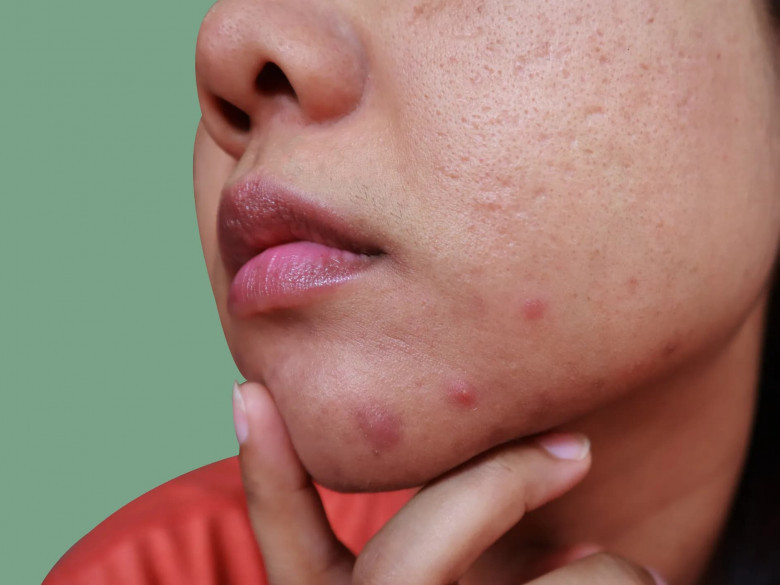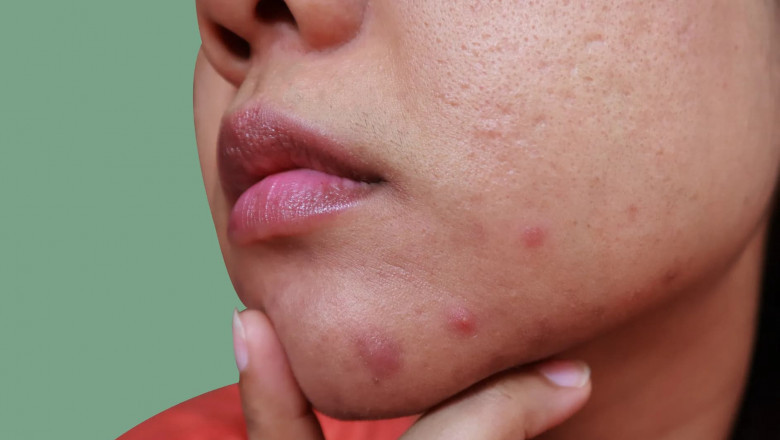views
Understanding Tropical Acne
Tropical acne, also known as acne tropica, is a stubborn type of acne that thrives in hot, humid environments. If you've ever traveled to or lived in a tropical climate and suddenly noticed severe breakouts, chances are you’ve experienced this specific form of acne. Unlike the occasional zit, this acne tends to be more persistent and inflamed, often affecting the back, chest, and shoulders.

Differences Between Tropical Acne and Regular Acne
You might be wondering—acne is acne, right? Not quite. While both share some causes like clogged pores and bacteria, tropical acne is often more intense, spreading rapidly due to the relentless humidity and sweat. It can also be more resistant to common over-the-counter treatments, requiring specialized care.
Who Is at Risk of Tropical Acne?
Anyone in a warm and humid climate can develop tropical acne, but young adults, soldiers, travelers, and athletes are particularly vulnerable. People with oily skin types or a history of acne also have a higher risk, especially when exposed to consistent sweating and poor skin hygiene. If you're struggling with persistent breakouts, consulting the best dermatologist can help you manage symptoms effectively and prevent long-term skin damage.
Main Causes of Tropical Acne
Excessive Sweating
Sweat is your body’s way of cooling down, but in tropical regions, it can be a double-edged sword. When sweat mixes with dead skin and oil, it clogs your pores, creating the perfect breeding ground for acne-causing bacteria.
Humid Weather Conditions
High humidity means your skin never really dries. That constant moisture keeps your pores open and vulnerable to dirt, oil, and bacteria. It also leads to overproduction of sebum, which is another contributor to breakouts.
Clogged Pores from Oils or Lotions
Many people use heavy sunscreens or moisturizers in tropical climates. While these protect your skin from the sun, they can also clog your pores if not chosen wisely. Always opt for non-comedogenic products that don’t suffocate your skin.
Bacterial Infections
The excess moisture on your skin creates a friendly environment for bacteria like Propionibacterium acnes and Staphylococcus aureus, which can worsen inflammation and lead to infected acne lesions.
Role of Hormones in Acne
Hormones play a huge role in oil production. In tropical conditions, your sebaceous glands can go into overdrive, especially if you’re already going through hormonal changes due to puberty, menstruation, or stress. That’s a recipe for breakouts.
Environmental Triggers for Tropical Acne
Pollution and Dust
Tropical regions, especially urban ones, often have high levels of pollution. Dirt and grime stick to your sweaty skin, causing even more clogged pores and acne flare-ups.
Tight or Non-Breathable Clothing
Wearing synthetic fabrics that trap heat and moisture can worsen tropical acne. That constant friction and sweat can irritate the skin and trigger painful breakouts, especially on your back and shoulders.
Excessive Use of Skin Products
Too much of a good thing can be bad. Overwashing, scrubbing, or layering products on your skin in an attempt to stay clean can actually strip the skin’s barrier and cause more oil production, worsening acne.
Common Symptoms of Tropical Acne
The most common signs include red, inflamed pimples, whiteheads, blackheads, and even painful cysts. These breakouts usually appear in clusters and often feel sore or itchy, especially in areas covered by clothing.
How to Diagnose Tropical Acne
A dermatologist can usually identify tropical acne just by looking at the skin and discussing your environment and lifestyle. There’s no special test, but they may rule out fungal acne or other skin conditions to ensure the right treatment plan.
Prevention Tips for Tropical Acne
Keep Skin Clean and Dry
Wash your face and body with a gentle cleanser, especially after sweating. Pat your skin dry instead of rubbing it, which can cause irritation.
Use Non-Comedogenic Products
Look for products labeled “oil-free” or “non-comedogenic” so they don’t block your pores. This includes sunscreen, moisturizers, and makeup.
Wear Breathable Clothing
Choose clothes made of cotton or moisture-wicking materials. Loose-fitting outfits help your skin breathe and reduce friction-related breakouts.
Natural Remedies to Soothe Acne
Tea tree oil, aloe vera, and green tea extract are known for their antibacterial and anti-inflammatory properties. Using a diluted form of these can help calm acne without the side effects of harsher treatments.
Medical Treatments for Tropical Acne
Topical Antibiotics
Clindamycin and erythromycin are common topical antibiotics that fight acne-causing bacteria and reduce redness.
Oral Medications
In severe cases, doctors may prescribe oral antibiotics or even retinoids like isotretinoin. These are usually reserved for persistent or cystic acne.
Dermatologist Interventions
Chemical peels, laser treatments, and drainage of cysts are options for chronic tropical acne that doesn’t respond to medication.
Myths About Tropical Acne
One common myth is that sweating helps "flush out" acne. In truth, sweat mixed with oil and bacteria does the opposite. Another myth is that sun exposure clears acne. While it may dry out pimples temporarily, it often leads to more breakouts afterward.
Tropical Acne in Men vs. Women
Men generally have oilier skin, which can make them more prone to tropical acne. However, women’s hormonal fluctuations often lead to cyclical flare-ups. Both sexes need targeted skincare based on their skin types and activities.
Coping with Tropical Acne Emotionally
Dealing with acne, especially in visible areas, can affect your confidence and mental health. Remember that tropical acne is treatable and often temporary. Building a routine, seeing a dermatologist, and practicing self-care can help you manage both physically and emotionally.
Conclusion
Tropical acne is a skin nightmare many people in hot and humid climates face. The good news? With the right skincare routine, environmental awareness, and some patience, you can reduce its impact and regain clear skin. Know your triggers, avoid pore-clogging products, and don’t be afraid to seek professional help when needed.
FAQs
1. Is tropical acne permanent?
No, with proper treatment and care, tropical acne can be managed and even eliminated over time.
2. Can I exercise in a tropical climate without getting acne?
Yes, just make sure to shower immediately after, wear breathable clothes, and avoid heavy skincare products.
3. Are natural remedies effective for tropical acne?
They can help with mild acne, but severe cases often need medical attention.
4. Does drinking water help with acne?
Staying hydrated can support skin health but won’t directly cure acne.
5. Should I stop using sunscreen if it causes acne?
No, instead switch to a non-comedogenic sunscreen that’s oil-free.














Comments
0 comment